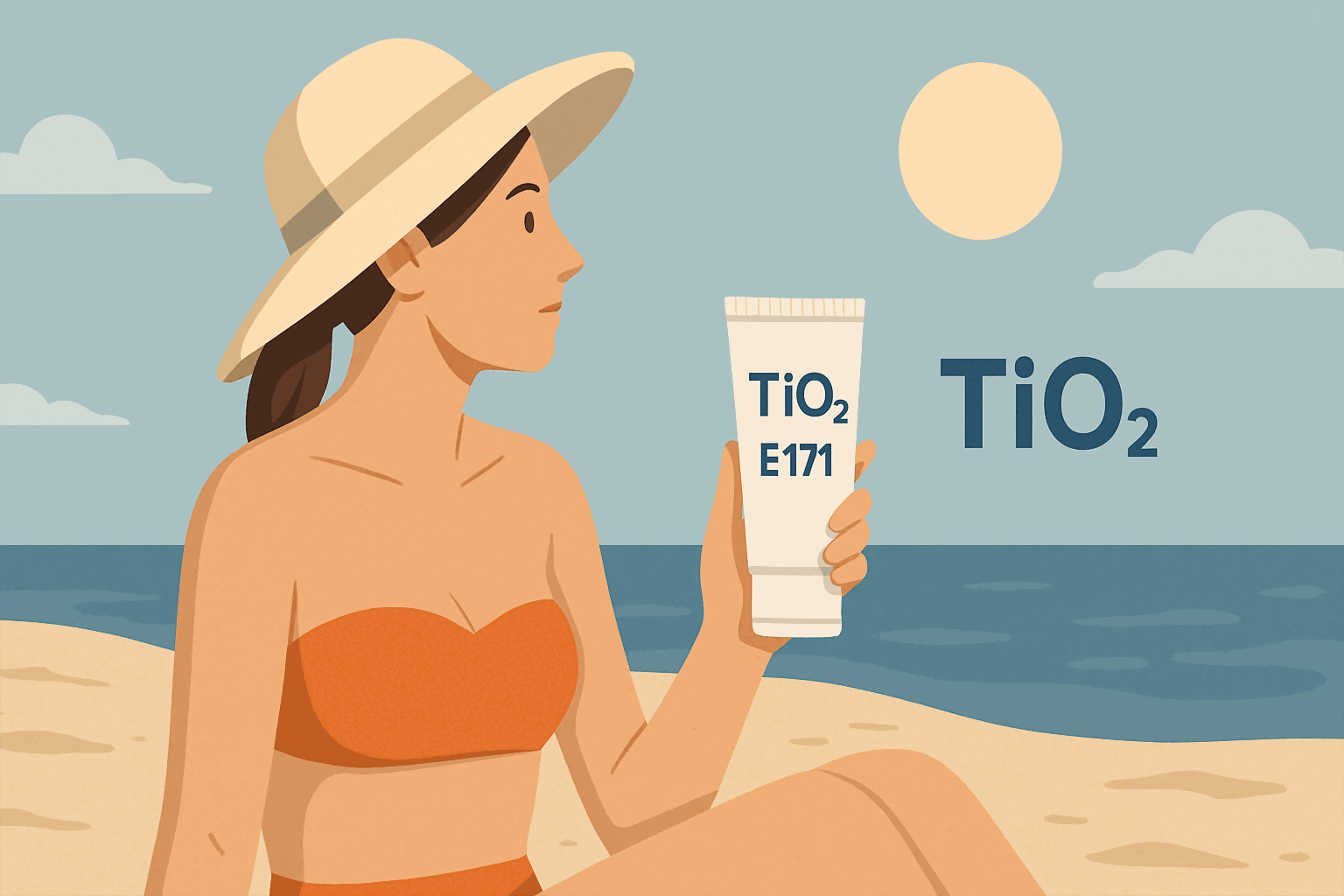
Titanium Dioxide in Cosmetics: Safety, Myths, and Evidence
- Olivia Hart
- Skincare , Health
- May 1, 2025
Table of Contents
Titanium Dioxide (TiO₂, E171) in Cosmetics: Should You Be Concerned?
Titanium dioxide is one of the most widely used ingredients in the cosmetics industry. It’s found in sunscreens, powders, foundations, and toothpastes thanks to its physicochemical properties: it effectively scatters and reflects ultraviolet radiation, protecting the skin from photoaging and cancer.
However, in recent years, this ingredient has come under scientific and public scrutiny—especially due to its nanoparticle forms and potential genotoxicity.
What’s New in Scientific Literature?
In 2023, the European Food Safety Authority (EFSA) published a review reassessing the safety of TiO₂. The agency concluded that when ingested, some nanoparticle forms of TiO₂ may pose a potential genotoxic risk (DNA damage), particularly with long-term consumption. Consequently, it was banned from food products in the European Union. However, TiO₂ remains permitted in cosmetics and is still allowed in food products in the United States and Russia.
Let’s Break Down the Facts:
1. Does TiO₂ Penetrate the Skin?
Numerous independent studies have shown that titanium dioxide nanoparticles do not penetrate intact skin. When applied topically, they remain in the stratum corneum of the epidermis and do not enter the bloodstream. Moreover, even with long-term use (e.g., regular sunscreen application), systemic exposure is considered negligibly low (CDC study).
2. Additional Effects
Beyond photoprotection, TiO₂ demonstrates antimicrobial activity, may help accelerate wound healing, and protects against skin infections. These effects are being actively studied in the context of medical and therapeutic cosmetics.
3. Is TiO₂ a Carcinogen?
No — titanium dioxide is not classified as a carcinogen when used topically. Some studies have indicated carcinogenic potential from inhalation of powdered forms in industrial settings (as aerosols or dust). However, further analysis showed that the risk was mainly associated with contaminants (e.g., titanium tetrachloride, asbestos, sulfuric acid mist), not with TiO₂ itself (review in PubMed Central).
How Is TiO₂ Used in Cosmetics?
- In sunscreens — as a physical UVA and UVB filter;
- In makeup — for a mattifying and brightening effect;
- In medical cosmetics — as an auxiliary substance in creams, ointments, and gels.
Why Is It Banned in Some Products?
The concern primarily relates to inhalation or ingestion of nanoparticles. Therefore, since 2023, the EU has banned the addition of TiO₂ in:
- Aerosol forms, which can be inhaled;
- Toothpastes, due to the risk of accidental swallowing (especially in children).
Should You Avoid Cosmetics Containing TiO₂?
As of now, data collected since the 1960s show no evidence for avoiding topical cosmetic products that contain TiO₂. This is especially true for sunscreens, whose effectiveness in preventing photoaging and melanoma has long been proven. The risk from sunburn greatly outweighs the hypothetical risk of using titanium dioxide on the skin.
On the contrary, people with fair skin types should be especially diligent about using sunscreens with TiO₂ during summer months.
What About Its Use in Food?
TiO₂ was formerly used as a food additive (E171), adding whiteness to chewing gum, candies, yogurts, etc. Its use in food has now been banned in the EU due to concerns over the genotoxic safety of nanoparticles. However, it is still allowed in the US and Russia. The main potential risk involves accumulation in the gut and possible changes to the microbiota, though conclusive data is lacking.
Practical takeaway: It’s best not to swallow toothpaste containing TiO₂ or consume large amounts of candy with E171.
Conclusion:
Titanium dioxide remains a valuable and effective component in topical cosmetic products. Its photoprotective benefits, especially in strong sunlight, are clinically proven. At present, there is no scientific basis to consider topical use of TiO₂ harmful to health, provided recommendations on dosage and product form are followed.